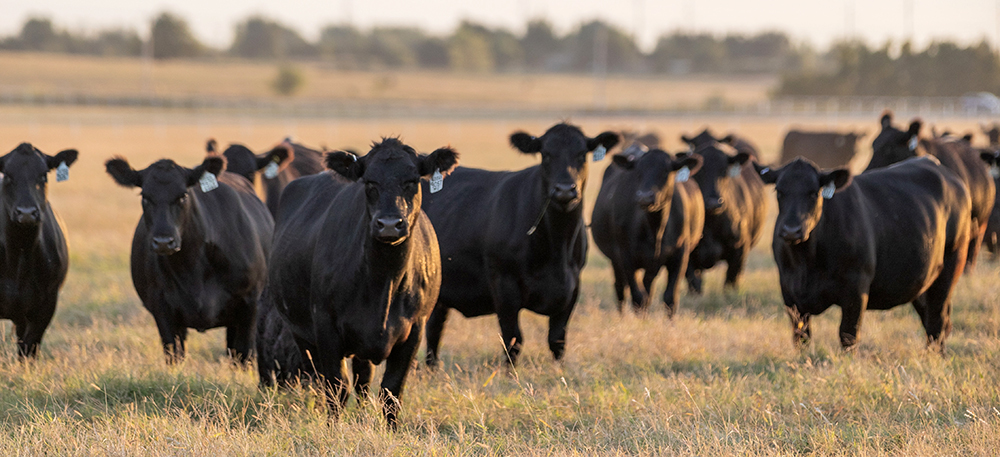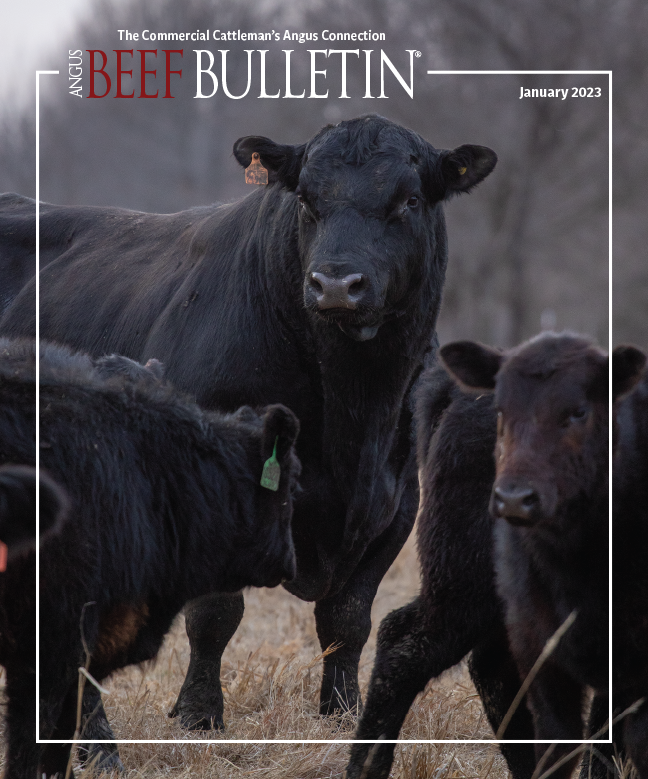
Improve Fertility, Overall Income
Understanding female reproduction accelerates positive momentum in the cow herd.
Most cattlemen want cattle that breed easily, calve early and display good reproductive performance. While this may sound simple enough, how do you achieve those things simultaneously?
“I’m a big fan of a concept called ‘positive momentum,’ because I believe really good reproductive success this year ensures really good reproductive success next year,” said Bob Larson, a veterinarian with the Beef Cattle Institute at Kansas State University. During the Angus University webinar, “Keys to Reproductive Success: Female Edition,” hosted Dec. 13, Larson shared tools and practices to help cattlemen achieve optimal success in their cow herds.
One way to achieve this goal is to benchmark your current situation and compare it to a desired plan. For example, a producer with an 8% open rate might set a goal of Larson’s ideal open rate of 5%. This allows for a significant increase in earned income as cows calving earlier leads to heavier calves at weaning and a faster rebreed window.
Larson also described the difference in reproductive success for first-calf heifers. To meet the constraints of having an 83-day period for cows to rebreed and calve at the same time the next year, Larson recommended heifers calve ahead of cows for their first calf. That affords them a longer breeding window to conceive in time to calve with the cows the next year. To help ensure heifers reach puberty at the right time, he advised seeking assistance from your veterinarian.
“It is important for veterinarians to really evaluate the heifers to make sure each individual heifer and the group as a whole can reach puberty in time to get bred a little ahead of the cows,” Larson said.
The onset of puberty, he explained, is primarily influenced by age and weight within breeds. That leads to a common question: What is the appropriate target weight?
“The real question is, what ration should I feed heifers to result in the desired number reaching puberty by the desired date,” Larson said. He emphasized again how working alongside a veterinarian and a nutritionist helps producers answer those questions.
Larson reiterated that for producers to achieve this success in their operations, they must avoid the primary threats to positive momentum. These threats include having heifers who don’t calve ahead of cows, calving in thin body condition, bulls that fail to successfully breed cows and diseases ending pregnancy. Avoiding these issues promises potential for success year after year.
To dive deeper into Larson’s presentation, visit bit.ly/DecemberAUrecording.
Editor’s note: Whitney Whitaker is a communications specialist for the American Angus Association. Lead photo courtesy American Angus Association.

